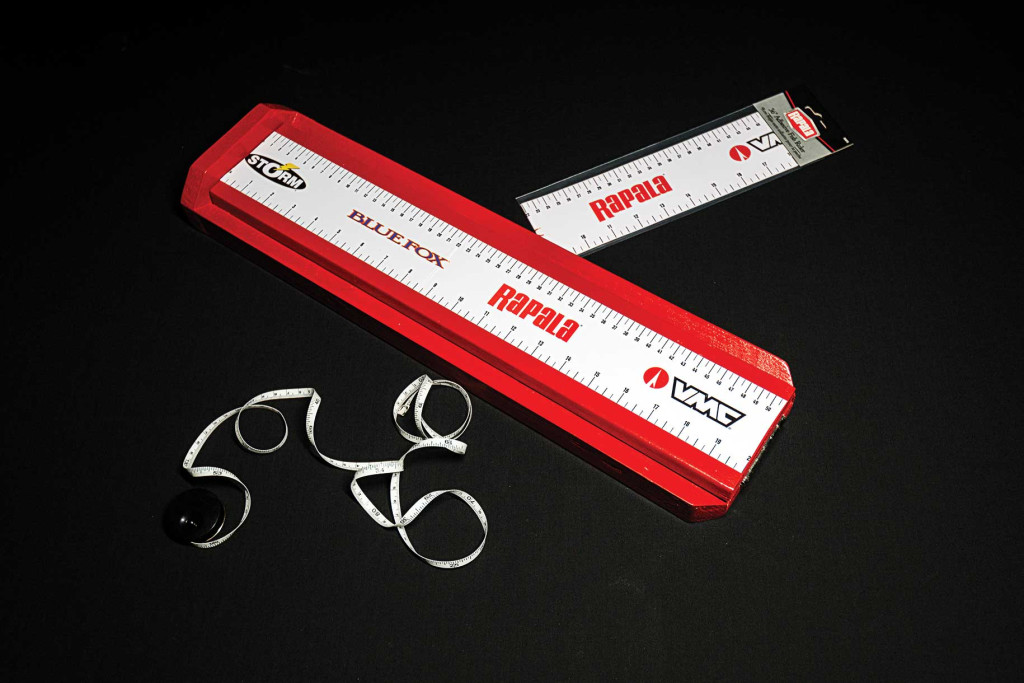
By Justin Haag
Measuring fish is important. For one, a measurement is often needed to abide by regulations, especially for those who harvest fish. For another, it gives a boastful angler baseline information for bragging to friends who weren’t there.
Many waters in Nebraska have special size regulations dependent on species and location. They can all be found in the Nebraska Fishing Guide, available free online and in print, in tabular format. The state’s recent regulation change to allow only one channel catfish over 30 inches long, for instance, exemplifies the importance of knowing the size of the catch.
The guide also has directions for how to measure a fish. It instructs to lay it on top of the measuring tool, and not use a flexible tape measure to follow the contour of the fish’s body. The mouth should be closed and the lobes of the tail fin pinched to a point to find its definitive end for measurement.
A flimsy tape is my least favorite way to measure a fish. Compact, yes, but tape can be a challenge to keep straight while handling a flopping fish. Such an ordeal hinders the goal of quickly returning fish to the water to ensure survival.
A tape measure helps minimize the load while hiking to secluded fishing spots, but my self-constructed bump board is the tool of choice for the boat and ice sled. The bump board, inspired by watching fisheries biologists as they quickly measure dozens of fish during surveys, is sturdy with a stop on one end for the fish’s snout.
Of course, a bump board is nothing rare in fishing. Many plastic and metal versions are available from retailers. As anglers know, size matters, though. I discovered that most manufactured bump boards top out at 36 inches or less, short of the 40-inch threshold for a northern pike or muskie master angler award in Nebraska. Show me a fisherman with a 36-inch bump board, and I’ll show you a pessimist.
The do-it-yourself bump board is one of those projects that can be built as well, and as attractive, as one wants. The main thing is that it’s accurate. Mine is constructed from two 20-inch pieces of three-quarter-inch-thick pine hinged in the center.
With a table saw, I was able to create angled pieces to attach to the sides of the first half, resulting in a trough for retaining bigger species. By making the snout’s stopping height exceed the two boards’ width when folded, smaller species can be measured without extending the tool.
Once complete, I covered it with red spray paint and a couple of coats of polyurethane for protection from water and slime. Then, I added the hinge.
Manufactured ruler decals, which meet the state’s master angler requirements, are easy to install not only on a bump board, but also on the hulls of kayaks, boats and other watercraft. My bump board design required two, and a little help from my daughter’s vinyl cutter to complete the final four inches. Again, why are these manufacturers so set on 36 inches? Pessimists, I tell ya.
To maintain accuracy, it’s important to not attach the decal until after all hardware has been installed. While it may be tempting to cut a few inches off the left side of the ruler before attaching it — you know, to make photo evidence more impressive when regaling those previously mentioned friends with fish stories — it might not be a popular option during a visit with the game warden.
